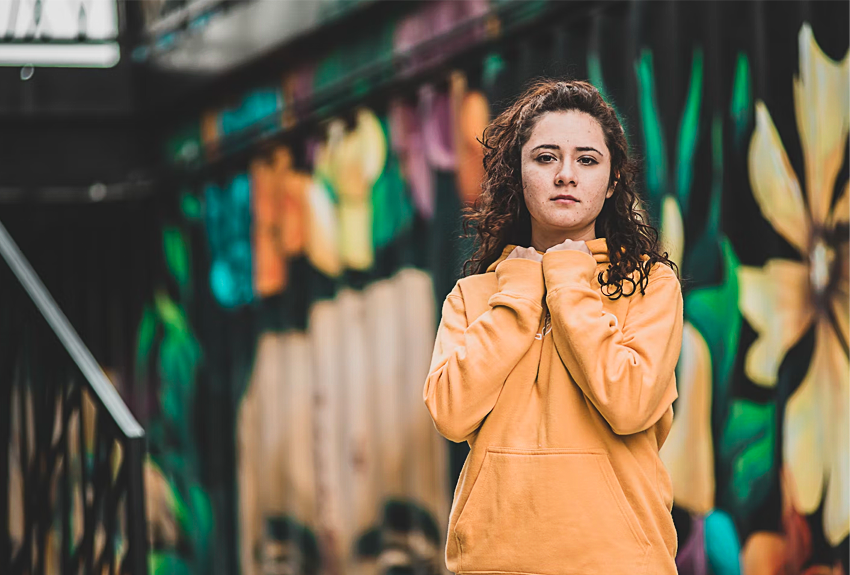While not everyone gets terrified by the idea of a haunted house or seeing a large spider, all people feel fear.
The levels of fear we experience fluctuate. Sometimes fear can be fleeting, such as when we have feelings of anxiety before a presentation, and it can also be irrational. Occasionally, a fear can become a phobia. According to Johns Hopkins Medicine, a phobia is an “uncontrollable, irrational, and lasting fear of a certain object, situation, or activity. This fear can be so overwhelming that a person may go to great lengths to avoid the source of this fear.”
Many people have phobias that range from mild to severe. In fact, Johns Hopkins Medicine reports that about 19 million Americans have one or more phobias. Phobias can happen in early childhood, but are typically first seen between ages 15 and 20. Despite their prevalence, phobias are long lasting and can cause intense physical and psychological reactions and can affect one’s ability to function normally at work, school, and in social settings.
As the Mayo Clinic explains: “Specific phobias are among the most common anxiety disorders, and not all phobias need treatment. But if a specific phobia affects your daily life, several therapies are available that can help you work through and overcome your fears — often permanently.”
Common categories of specific phobias include:
- Certain specific situations, such as airplanes or confined, enclosed spaces, like elevators
- Nature, such as thunderstorms or heights
- Animals, insects, reptiles or dogs
- Blood, needles, accidents, or various medical procedures
- Loud noises, including choking, vomiting and crowds
Some of the most common phobias are:
- Acrophobia: The fear of heights
- Agoraphobia: The fear of public spaces or crowds
- Arachnophobia: Fear of spiders
- Astraphobia: Fear of thunder and lightning
- Autophobia: Fear of being alone
- Claustrophobia: Fear of confined or crowded spaces
- Hemophobia: Fear of blood
What Causes Phobias?
According to Healthline, “genetic and environmental factors can cause phobias. Children who have a close relative with an anxiety disorder are at risk of developing a phobia. Distressing events, such as nearly drowning, can bring on a phobia.”
Healthline adds that people with ongoing medical conditions or health concerns often have phobias and that substance abuse and depression are also connected to phobias. Johns Hopkins adds that “certain phobias have been linked to a very bad first encounter with the feared object or situation.”
Phobia Symptoms
According to the National Institute of Mental Health, nearly 10 percent of people in the U.S suffer from some type of phobia. And while we all have struggled with mild anxiety at one point or another, like before an exam or preparing for a first date, the phobia that the National Institute of Mental Health is referencing is much more severe. In fact, to even be classified as a phobia, the fear has to be considered both overwhelming and debilitating, the type of fear that will prevent someone from being able to live their life. (It’s one thing to ask a friend to get rid of a spider, but another to avoid going outside for fear of them).
Physical symptoms of phobias can include sensations such as:
- Trouble breathing
- Increased heart rate
- Tightness or pain in the chest
- Nausea
- Trouble swallowing or a sense of choking
Reactions to phobias may vary and can unfortunately be as debilitating as panic attacks. Other reactions may include:
- Going to extreme lengths to avoid the feared situation or object
- Feelings of anxiety or panic in response to thinking about the source of fear
- Difficulty carrying out every day activities due to the phobia
- A sense of powerlessness to control one’s reaction
Phobia Treatment Options
There is help. When anxiety and phobias interfere with someone’s ability to work, participate in social activities, or maintain positive relationships, they should consider treatment for severe anxiety and phobias. Typically, phobias can successfully be treated with a form of cognitive behavior therapy called exposure therapy. Exposure therapy is a way to gradually desensitize what would normally be a trigger or uncomfortable stimuli prompting the phobia.
“At Citizen Advocates, we help patients with phobias manage the root cause of the anxiety through gradual exposure to the feared situation or object,” says Lead Clinician Christine Smith, a Licensed Mental Health Counselor trained in Eye Movement Desensitization & Reprocessing (EMDR) at Citizen Advocates. “Often patients who are receiving mental health counseling for depression or substance abuse show signs of phobias. Over time, patients can become conditioned to the once feared object and are more able to live a fully realized life.”
If you or a loved one are feeling helpless or concerned about anxiety disorders, such as phobias, contact us. Anxiety and fear don’t have to hold you back from living a full life. We’re here to help you release any negative automatic thoughts that might be leading to a phobic behavior reaction.
24-HOUR CRISIS LINE
(518) 483-3261
(518) 891-5535


 Previous Post
Previous Post


